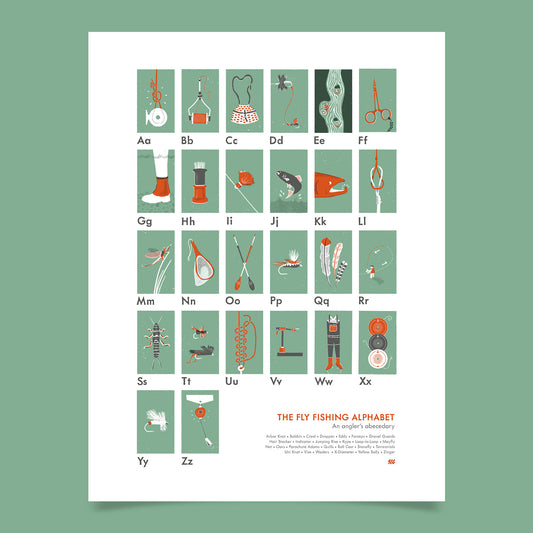Field Notes
Back in the saddle
Just a quick note to let people know that My Outdoor Alphabet is still up and running. We've got some new prints to share in the near future (surfing, anyone?)...
Back in the saddle
Just a quick note to let people know that My Outdoor Alphabet is still up and running. We've got some new prints to share in the near future (surfing, anyone?)...

Reel it in
Well, it finally happened! The Fly Fishing Alphabet poster is finally done, and is now available to decorate fishing cabins and office walls across the globe. From arbor knot to...
Reel it in
Well, it finally happened! The Fly Fishing Alphabet poster is finally done, and is now available to decorate fishing cabins and office walls across the globe. From arbor knot to...
The Daily Letter
Over the last few years of doing posters and onesies we've come up with dozens of variations for each letter across a really wide variety of outdoor activities. We can only...
The Daily Letter
Over the last few years of doing posters and onesies we've come up with dozens of variations for each letter across a really wide variety of outdoor activities. We can only...
G is for Grommet
One of my favorite things about working on this Outdoor Alphabet "thing", is the response people have when they see the concept for the first time. Whether it's on...
G is for Grommet
One of my favorite things about working on this Outdoor Alphabet "thing", is the response people have when they see the concept for the first time. Whether it's on...
L is for Lantern
Illustration by Les Kouba From The New Way of the Wilderness — a beautiful little book from the 50's that covers the basics of backcountry camping. Author Calvin Rutstrum wrote 15 books, mainly...
L is for Lantern
Illustration by Les Kouba From The New Way of the Wilderness — a beautiful little book from the 50's that covers the basics of backcountry camping. Author Calvin Rutstrum wrote 15 books, mainly...
S is for Slopestyle
You might have already seen this out there, but it's worth watching again. Still plenty of summer days to get out on the trail and spin some wheels...
S is for Slopestyle
You might have already seen this out there, but it's worth watching again. Still plenty of summer days to get out on the trail and spin some wheels...